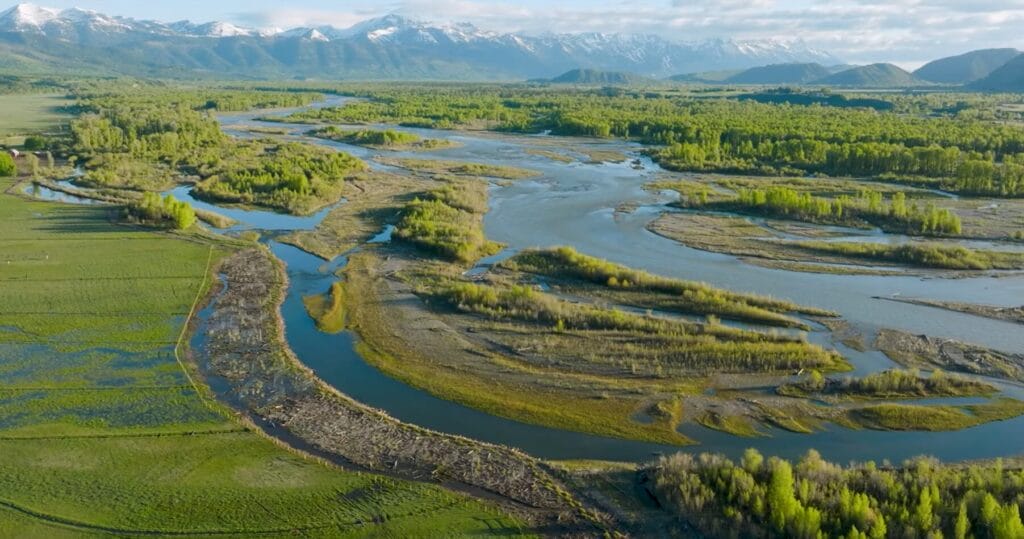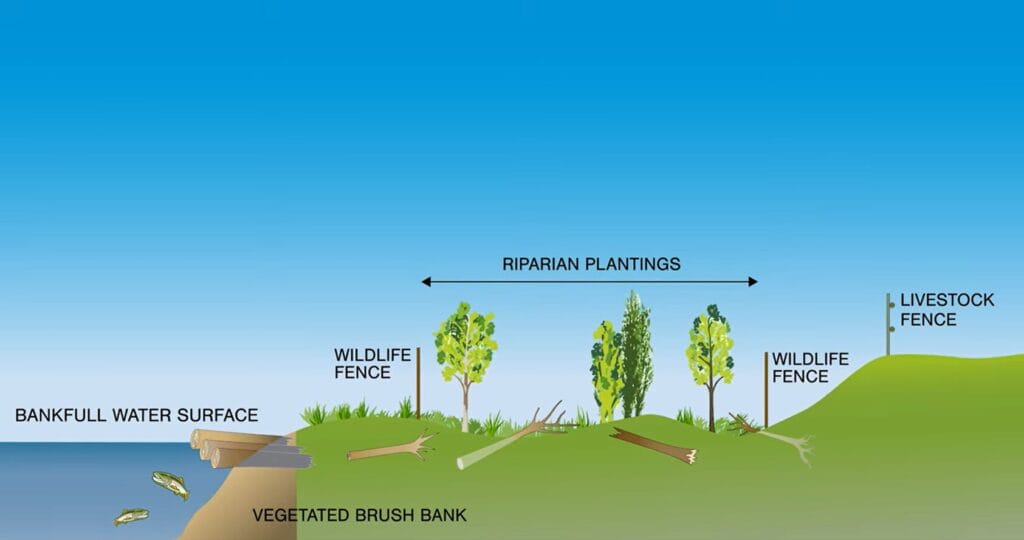
The Snake River is a vital lifeline coursing through the heart of Teton County, Wyoming.
Facing dynamic challenges, the river’s mainstem can fluctuate from 30,000 cubic feet per second (cfs) to just 280 cfs in a single season––a flow reduction of 90 percent. Combined with human-driven changes resulting in riverbank erosion, land loss and degraded habitat for native Snake River cutthroat trout, Trout Unlimited is working to address these challenges and restore this iconic watershed for future generations.
Known as the Snake River Headwaters Initiative, TU has reconnected more than 36 miles of stream and invested $9.2 million in the watershed since 2016. Most recently, we took on a new project at the Snake River Ranch to advance this work, bringing together agency partners, ranchers and community members to strengthen the Snake using natural materials.
“This is a part of the Snake River Ranch that the family has been ranching since the 1940s,” said Turner Resor at the Snake River Ranch. “Every year, we’d be moving the temporary electric fence a few feet back and watch the land slowly wash down the river.”
“The lower Snake River Ranch sits at the tail end of the Jackson levee system,” said Leslie Steen, Wyoming state director at TU. “What that produces is a lot of energy between the levees and makes this area of the Snake River act as if it’s the end of a garden hose when finally released at the ranch.”
Naturally, this creates a lot of streambank erosion and the need for stronger structures to help mitigate and/or contain the released energy in the river to preserve the surrounding landscapes.

After consulting with Wyoming Game and Fish, Teton Conservation District and Snake River Ranch, the decision was made to undertake a project to preserve the agricultural needs of the land (e.g. grazing areas) while also installing more permanent streambank infrastructure to contain the river’s ebbs and flows.
Under the traditional method of “armoring” the bank, tons of rocks are installed along the edges of the river to absorb the hydrological energy. In this specific project, however, there was a need to increase the biodiversity of the surrounding landscape––as well as create better habitat for native Snake River cutthroat––resulting in a new pilot project with wooden infrastructure and a riparian buffer.

“Essentially, we’re installing a large number of wooden poles horizontally into the existing streambank to not only absorb the energy from the river, but to also eventually create undercuts for trout,” said Steen. “The riparian buffer behind this will also allow the river to spread out a bit without causing erosion going forward––making this the perfect balance for human, fish and cattle.”
Because of the project’s benefits, the local community came together to support the project, as well.
“It’s been an incredibly labor-intensive project for both humans and machines,” said Steen. “We relied upon an incredible collection of partners, supporters, local businesses, volunteers and TU chapter members to cut thousands of willows and hundreds of trees for this project to work.”

Community involvement has been a consistent theme across the Snake River Headwaters Initiative as a whole because of the Snake River cutthroat’s unique status in the West as the only remaining subspecies that still dominates in its home range.
Across the West, the Snake River faces a number of challenges ranging from dams, erosion and habitat loss. Nonetheless, TU continues to chip away at this issues bit by bit to keep the West wild for future generations.



Comments